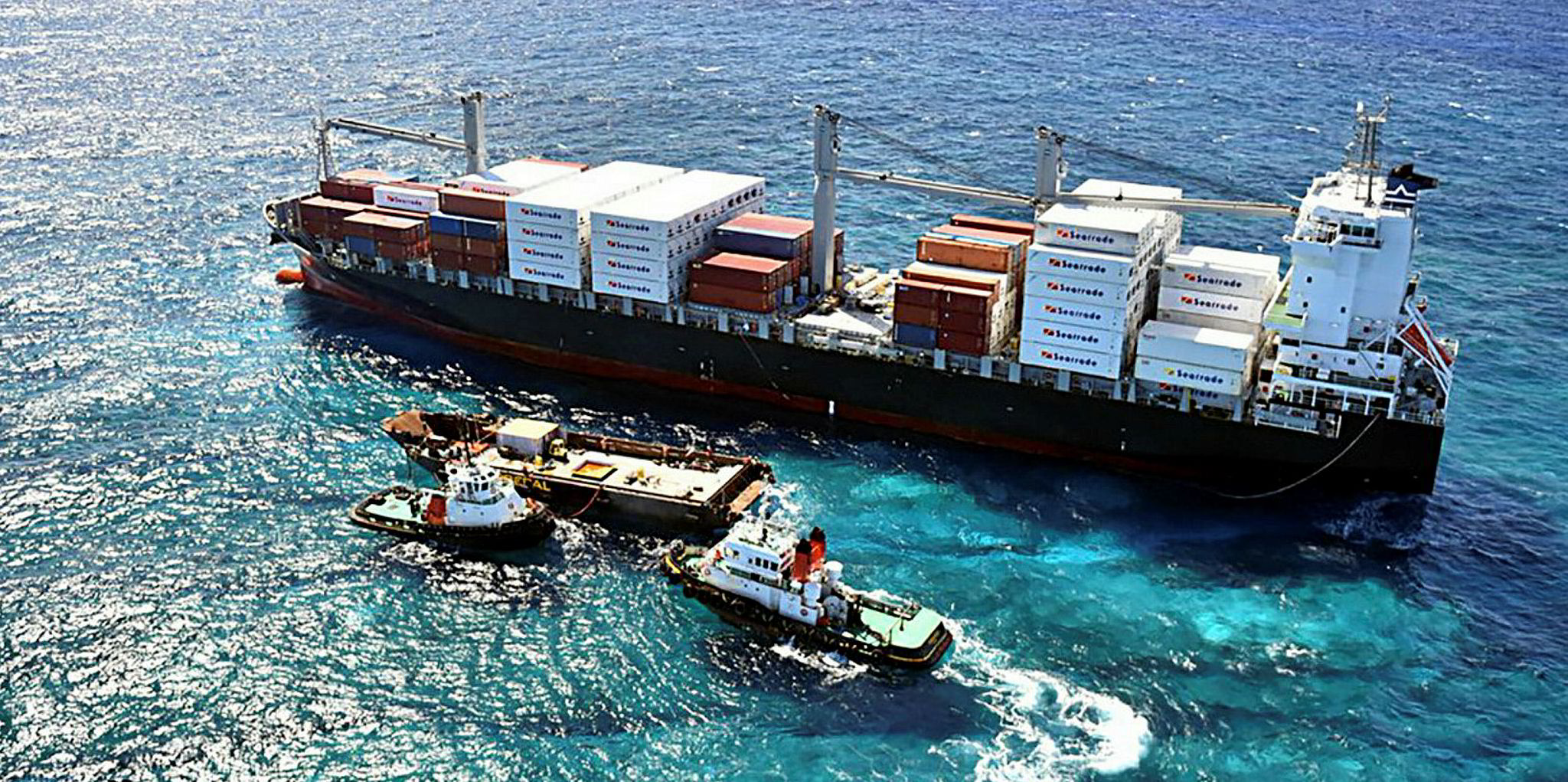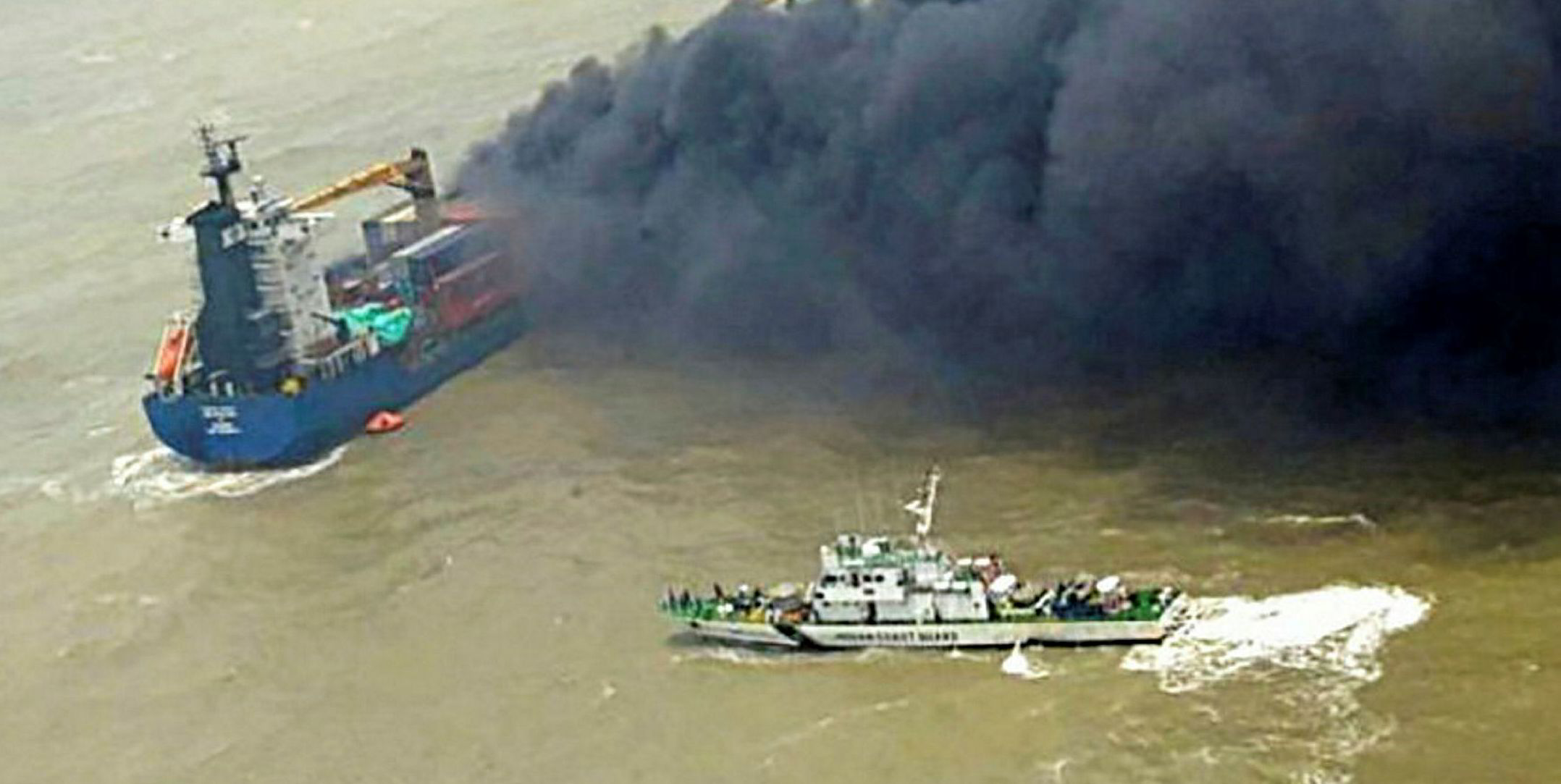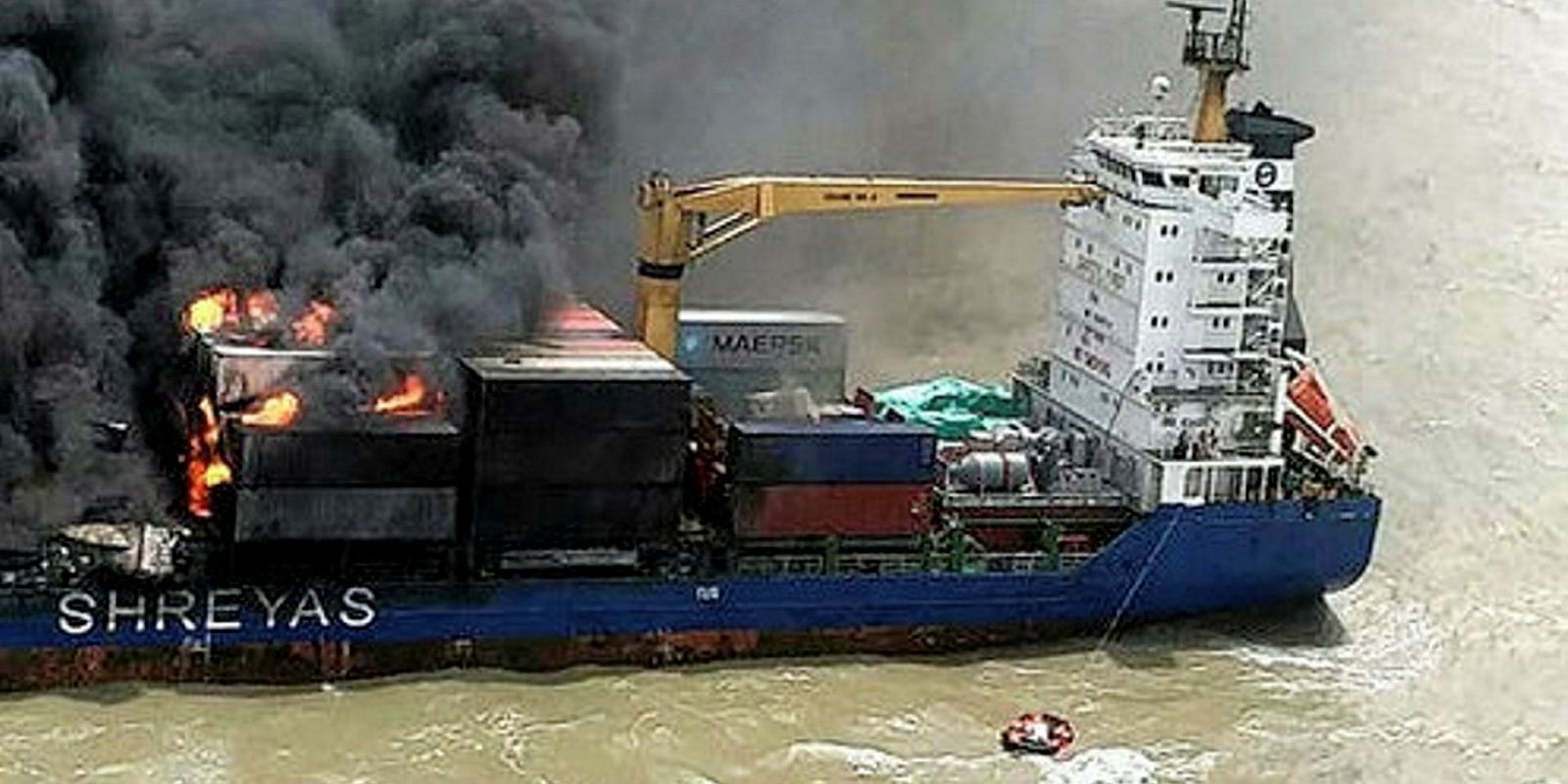Salvors will shortly be asked to bid to remove the burnt-out hull of the containership SSL Kolkata close to the environmentally sensitive Indian Sundarbans — a World Heritage site in West Bengal.
The 1,118-teu vessel (built 2006), which was wrecked by a huge explosion and fire, has broken its back and is aground, precariously balanced on a reef.
It is understood the hull insurers have not yet declared it a constructive total loss, although the owner, India’s Shreyas Shipping & Logistics, has issued a notice of abandonment.
The vessel got into trouble in the middle of June when a fire broke out in 60 containers, forcing the master to give the order to abandon ship.
Dutch salvor Smit was appointed to tackle the blaze under a Lloyd’s Open Form (LOF) contract with special compensation P&I clause. It has now been selected under a separate contract to remove the bunkers and dangerous containers. So far there has been no pollution from the bunkers.
The ship’s protection and indemnity insurance is with North P&I Club, which will manage and fund the wreck removal operation.
Recent similar tenders, including for the 2,194-teu Kea Trader (built 2017), suggest the bidding is likely to be competitive.
The Kea Trader wreck removal off New Caledonia in the South Pacific was won by Shanghai Salvage, although rival bidders complained that the Chinese salvor was prepared to accept contractual conditions they could not.
Smit is probably the favourite to get the SSL Kolkata job as it is managing the wreck and has equipment on site. However, others interested in the work include wreck removal specialists Resolve Marine, Shanghai Salvage and Ardent.
The SSL Kolkata job is likely to be comparatively straightforward. Unlike the Kea Trader, the wreck is resting in shallow waters at an angle of 40 degrees, the deck is only partly submerged and the area is sheltered.
But salvors are likely to have to take additional measures to assure the authorities they can protect the Sundarbans, which contains the largest mangrove forest on Earth and has been on Unesco’s world heritage list since 1997.
The Indian coastal authorities also have a reputation for strongly influencing salvage projects, which might be an additional consideration for bidders.
Then there is the risk the hull might start to break up.
Speculation over what caused the blaze centres on reports that the vessel may have been carrying a cargo of magnesium, which can combust when it comes into contact with water. This is the latest in a series of serious boxship fires that industry figures suggest are occurring at a rate of nearly one a month and recently included 15,262-teu Maersk Honan (built 2017) and 6,188-teu Maersk Kensington (built 2007).

Another grounding incident looks like it is having a better outcome than the SSL Kolkata. The 57,200-dwt Sam Lion (built 2012) grounded off the outer anchorage at Ceuta, the North African Spanish enclave, last week while fully loaded with a cargo of cement clinker as it headed for Dakar in Senegal.
The bulker was refloated by Greece’s Five Oceans Salvage under an LOF contract. Underwater inspections show damage to the hull and ballast tanks. However, it looks as though the ship will be saved. The Sam Lion is undergoing temporary repairs to allow it to sail for dry-docking repairs at Gibraltar or Algeciras.
The vessel’s P&I cover is with Steamship Mutual.
US salvor Resolve Marine is still attending to the 16,700-dwt product tanker Nu Shi Nalini (built 2012) nearly a month after an explosion and fire onboard the vessel off the coast of Kochi in south-west India.
The ship was fully loaded with a cargo of naphtha when the explosion occurred, claiming the life of one crew member. The crew were evacuated by an Indian Navy helicopter.
Resolve was appointed under an LOF and has been asked to remain in attendance because of the volatile nature of the cargo.






